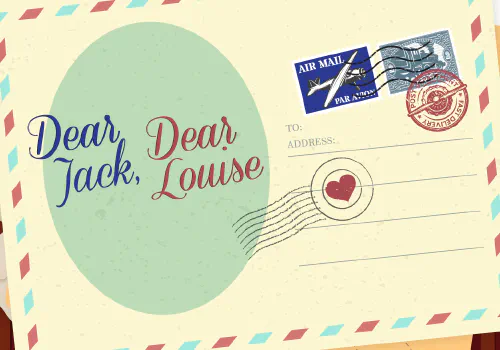By S. S. Moorty
“No household in the English-speaking world is properly furnished unless it contains copies of the Holy Bible and of The Works of William Shakespeare. It is not always thought that these books should be read in maturer years, but they must be present as symbols of Religion and Culture” (G.B. Harrison, Introducing Shakespeare. Rev. & Exp. [New York: Penguin Books, 1991], 11).
We, the Shakespearean-theater goers and lovers, devotedly and ritualistically watch and read the Bard’s plays not for exciting stories and complex plots. Rather, Shakespeare’s language is a vital source of our supreme pleasure in his plays. Contrary to ill-conceived notions, Shakespeare’s language is not an obstacle to appreciation, though it may prove to be difficult to understand Instead, it is the communicative and evocative power of Shakespeare’s language that is astonishingly rich in vocabulary—about 29,000 words—strikingly presented through unforgettable characters such as Hamlet, Macbeth, Lear, Othello, Rosalind, Viola, Iago, Shylock, etc.
In the high school classroom, students perceive Shakespeare’s language as “Old English.” Actually Shakespeare’s linguistic environment, experience, and exposure was, believe it or not, closer to our own times than to Chaucer’s, two hundred years earlier. Indeed, the history and development of the English language unfolds as follows: Old English, 449-1100; Middle English 1100-1500; and Modern English 1500-present. Shakespeare was firmly in the Modern English period.
At the time Shakespeare wrote, most of the grammatical changes from Old and Middle English had taken place; yet rigid notions about “correctness” had not yet been standardized in grammars. The past five centuries have advanced the cause of standardized positions for words; yet the flexible idiom of Elizabethan English offered abundant opportunities for Shakespeare’s linguistic inventiveness. Ideally it is rewarding to study several facets of Shakespeare’s English: pronunciation, grammar, vocabulary, wordplay, and imagery. The present overview will, however, be restricted to “vocabulary.”
To Polonius’s inquisitive question “What do you read, my lord?” (Hamlet, 2.2.191) Hamlet nonchalantly and intriguingly aptly replies: “Words, words, words” (2.2.192). This many-splendored creation of Shakespeare’s epitomizes the playwright’s own fascination with the dynamic aspect of English language, however troubling it may be to modern audiences and readers. Shakespeare added several thousand words to the language, apart from imparting new meanings to known words. At times Shake-speare could teasingly employ the same word for different shades of thought. Barowne’s single line, “Light, seeking light, doth light of light beguile” (Love’s Labour’s Lost, 1.1.77), as Harry Levin in his General Introduction to The Riverside Shakespeare (9) explains, “uses ’light’ in four significations: intellect, seeking wisdom, cheats eyesight out of daylight.”
Another instance: Othello as he enters his bedroom with a light before he smothers his dear, innocent Desdemona soliloquizes: “Put out the light, and then put out the light” (Othello, 5.2.7) Here ’light’ compares the light of Othello’s lamp or torch to Desdemona’s ’light’ of life.
In both instances, the repeated simple ordinary word carries extraordinary shades of meaning. “Usually such a tendency in a Shakespeare play indicates a more or less conscious thematic intent.” (Paul A. Jorgensen, Redeeming Shakespeare’s Words [Berkeley and Los Angeles; University of California Press, 1962], 100).
Living in an age of the “grandiose humanistic confidence in the power of the word” (Levin 9), Shakespeare evidently felt exuberant that he had the license to experiment with the language, further blessed by the fact that “there were no English grammars to lay down rules or dictionaries to restrict word-formation. This was an immeasurable boon for writers” (Levin 10). Surely Shakespeare took full advantage of the unparalleled linguistic freedom to invent, to experiment with, and to indulge in lavishly.
However intriguing, captivating, mind-teasing, beguiling, and euphonious, Shakespeare’s vocabulary can be a stumbling block, especially for readers. “In the theater the speaking actor frequently relies on tone, semantic drive, narrative context, and body language to communicate the sense of utterly unfamiliar terms and phrases, but on the page such words become more noticeable and confusing” (Russ McDonald, The Bedford Companion to Shakespeare: An Introduction with Documents [Boston: Bedford Books of St. Martin’s Press, 1996], 184).
Unlocking the meaning of Shakespeare’s vocabulary can prove to be an interesting challenge. Such words include those which “have dropped from common use like ‘bisson’ (blind) or those that the playwright seems to have created from Latin roots . . . but that did not catch on, such as conspectuities’ (eyesight or vision) or ‘unplausive’ (doubtful or disapproving). Especially confusing are those words that have shifted meaning over the intervening centuries, such as ‘proper’ (handsome), ’nice’ (squeamish or delicate), ‘silly’ (innocent), or ‘cousin’ (kinsman, that is, not necessarily the child of an aunt or uncle” (McDonald 184). Because of semantic change, when Shakespeare uses ‘conceit,’ he does not mean ‘vanity,’ as we might understand it to be. Strictly following etymology, Shakespeare means a ‘conception’ or ’notion,’ or possibly the ‘imagination’ itself.
Perhaps several Shakespearean words “would have been strange to Shakespeare’s audience because they were the products of his invention or unique usage. Some words that probably originated with him include: ‘auspicious,’ ‘assassination,’ ‘disgraceful,’ ‘dwindle,’ ‘savagery.’” Certainly a brave soul, he was " a most audacious inventor of words." To appreciate and understand Shakespeare’s English in contrast to ours, we ought to suspend our judgment and disbelief and allow respect for the “process of semantic change, which has been continually eroding or encrusting his original meaning” (Levin 8).
Shakespeare’s vocabulary has received greater attention that any other aspect of his language. Perhaps this is because it is the most accessible with no burdensome complications. Whatever the cause, Shakespeare’s language will forever be challenging and captivating.









